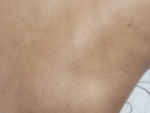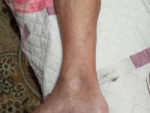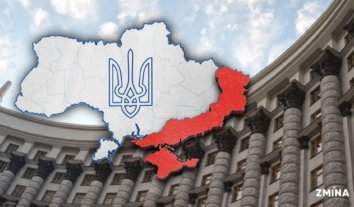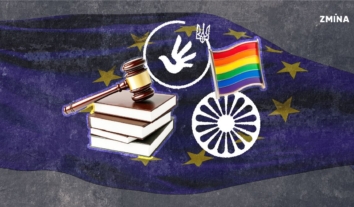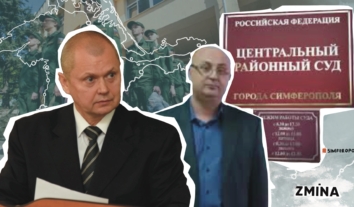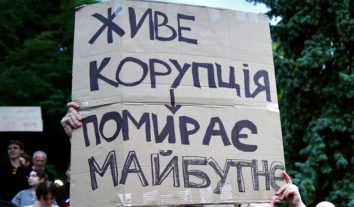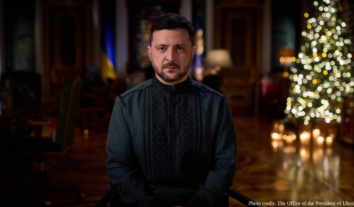“Broken ribs have already healed, so there’s no point”: what civilians face after captivity and torture to get money and help
The practice of abducting and detaining civilian Ukrainians in captivity in the occupied territories has become systematic for Russians. Often, this detention is accompanied by torture, humiliation and ill-treatment, which have grave consequences.
After being released from captivity, such victims need both physical and psychological rehabilitation. But can all former captives receive appropriate care? What problems do they face after captivity, what financial benefits can they expect from the state, and how can the fact of captivity be proved to those who were not released as part of official exchanges?
ZMINA talked about this with several former prisoners who were abducted during the occupation of Kherson, as well as Olena Belyachkova, coordinator of the groups of families of POWs and missing persons at Media Initiative for Human Rights.
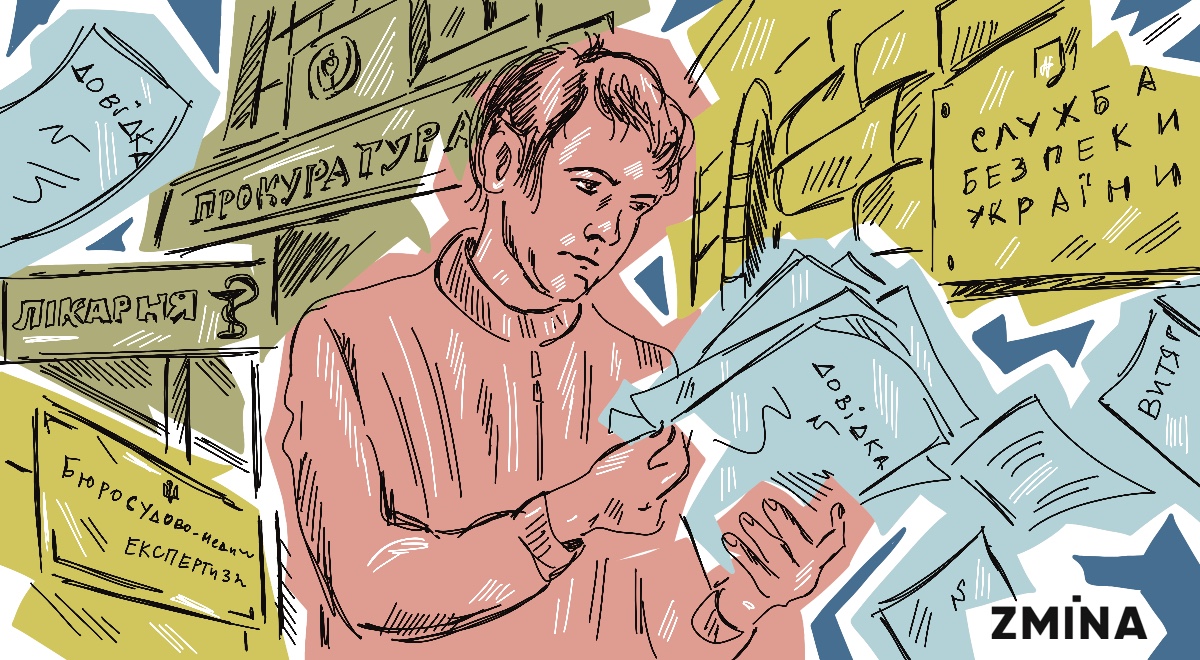
After the de-occupation of Kherson, local prosecutors did not know how to work with the released prisoners and took them to Kyiv
Roman Shapovalenko was abducted by the occupiers in August 2022 in Kherson and held for almost a month and a half in a local detention facility, tortured with electric shocks, stabbed with a knife, and subjected to drowning. The man was forced to confess on video that he was the one who had aimed Ukrainian missiles at the Antonivsky Bridge, and was then released. Roman remained in Kherson until the de-occupation, but one of his cellmates managed to move to the de-occupied territory immediately after the captivity, where he turned to law enforcement. This man told about Roman and other prisoners who were in the cell with him.
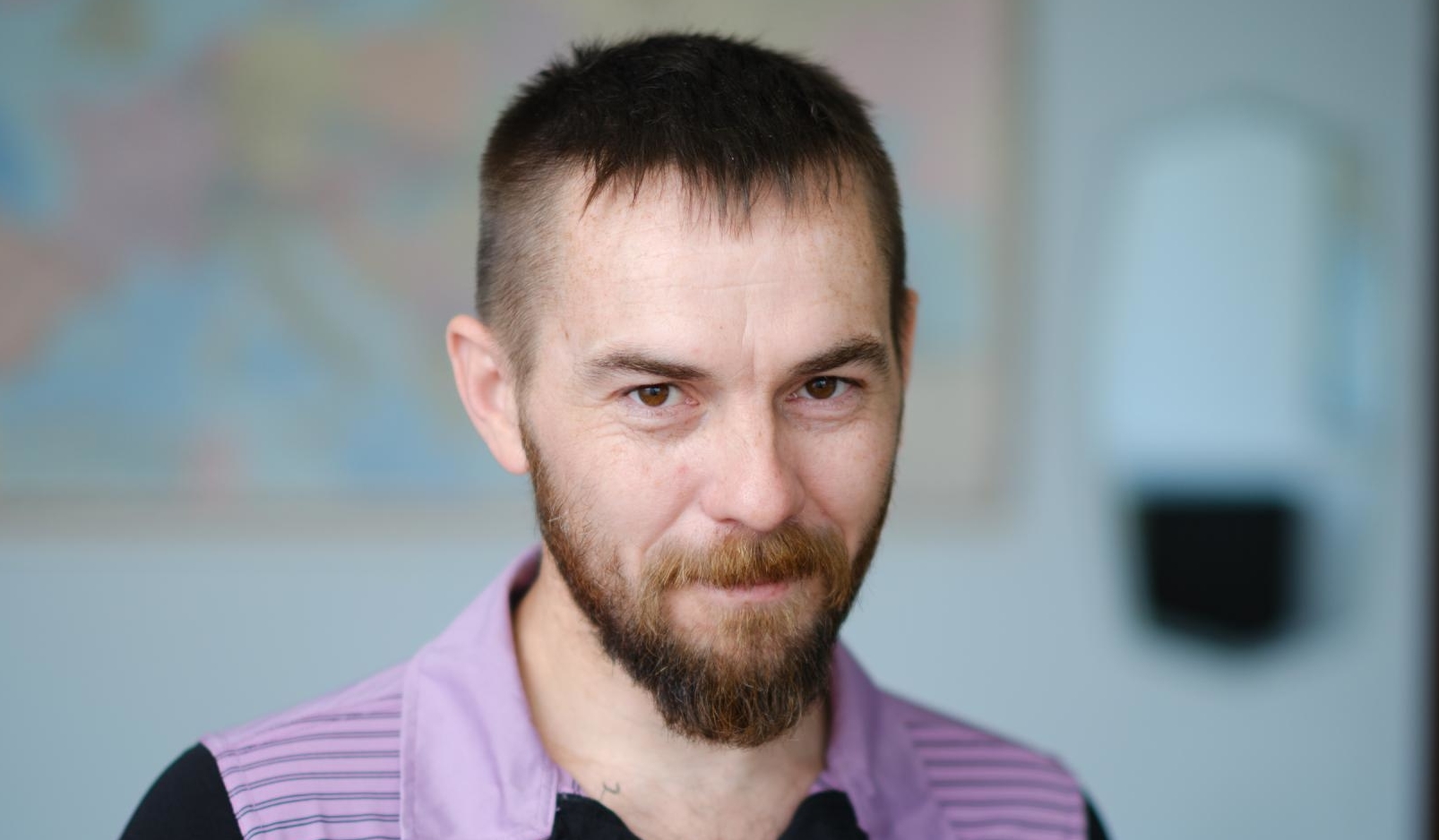 Roman Shapovalenko
Roman ShapovalenkoAfter the de-occupation of Kherson, law enforcement officers contacted Roman and asked him if he had really been in the Kherson temporary detention facility.
“They asked me if I was there because someone told them about me. I replied that I knew him and we were in the cell together. The prosecutor’s office found me on their own. After the torture, many people tried to leave by all means to the de-occupied territory. I had no way to escape on my own, I have four women in my family. Sometimes it happened that if a man was hiding, they took his wife or mother or someone close to him to the basement until he came back“, Roman recalls.
So after the de-occupation, prosecutors took Roman and several other victims to Kyiv. There, Kherson law enforcement officers consulted with him about working with Russian civilian hostages. According to Roman, at that time, prosecutors did not have a clear algorithm for working with them. Thus, the former Kremlin prisoners appeared on television, and were invited to meetings with government officials and representatives of international organisations.
But, according to Roman, some time after the liberation of Kherson, a number of people who had returned from the torture chambers began to report to local law enforcement.
“I met friends who were also in prison, some of them physically and psychologically broken. I ask them: does the state help you? And they answer that there is a lot of red tape, nothing happens with the submission of documents. Many of them had their documents taken away by the Russians, and now they have to somehow restore them. Many are told that there is not enough evidence that they were in torture chambers. A lot of bureaucratic problems and so on“, the man recalls.
He notes another problem faced by people who have been released from Russian torture chambers – a lack of information on whom to contact, what the algorithm of actions is, because not all people know about it. In addition, the victims have different degrees of trauma.
“We had people who were mentally traumatised, they didn’t trust anyone, and they needed to be pulled out of this state first. I could talk to them because I had been in those shoes. I explained what to do, where to go. What kind of treatment is provided, what kind of help“, says Roman.
He adds that the civilian hostages, who were taken to the capital with him by representatives of international organisations, were sent for rehabilitation. It was both physical and psychological rehabilitation. A full examination. He recalls that after torture, people had broken arms, ribs, and damaged kidneys.
The men underwent a forensic examination in Kherson. Roman notes that, since they were accompanied by prosecutors, there were no particular problems.
It is difficult to prove the fact of captivity if you are not a lawyer
According to Roman, the forensic examination was the most difficult stage, as it took 54 days of captivity for his broken ribs to heal. He also recalls that people were not allowed out of the torture chamber until their bruises had healed.
“I was checked more for my mental state. Because they put a lot of pressure on me mentally, scared me. Many in the cell tried to hang themselves, cut themselves“, adds the Kherson resident.
Another problem is that people know little about the legislation that obliges the state to pay 100,000 hryvnias, even if a person has been in captivity for only a day. To receive this payment, you need a decision from the Commission on establishing the fact of deprivation of personal liberty as a result of armed aggression against Ukraine, which operates under the MinReintegration. The Commission establishes the fact of captivity of military and civilians, including those already released from captivity.
At the same time, according to Roman, the fact of captivity is difficult to prove. In addition, the testimonies of former prisoners were checked five times, which means constant retraumatisation of the victims. Roman himself received financial compensation quickly, but the investigation lasted about a year.
“The hardest part was when they brought a woman with us. We did not know her story. We started telling our stories and saw that the woman was about to faint. It turns out that her son was tortured to death, and she recognised his remains only by a tattoo. She listens to our stories and understands what was done to her son“, the man adds.
It shouldn’t have been this way, the former Kremlin prisoner concludes.
Another prisoner, former Kherson police officer Anton Lomakin, faced similar problems.
Anton was taken prisoner by the occupiers and spent almost four months there, from August 15 to December 6, 2022. At first, the man was held in the Kherson temporary detention facility, and then transferred to the left bank of the Kherson region.
The Russians simulated Lomakin’s execution by putting a bag over his head, beating him with a stun gun, putting a T-shirt over his head and pouring water on him until he began to suffocate.
After more than 180 days of captivity, Lomakin was released. The man was unable to go to the territory controlled by Ukraine, so he stayed in occupied Oleshky with his relatives. And when the Russians exploded the dam of the Kakhovka hydroelectric power station, Anton managed to find a boat and get to the de-occupied territory.
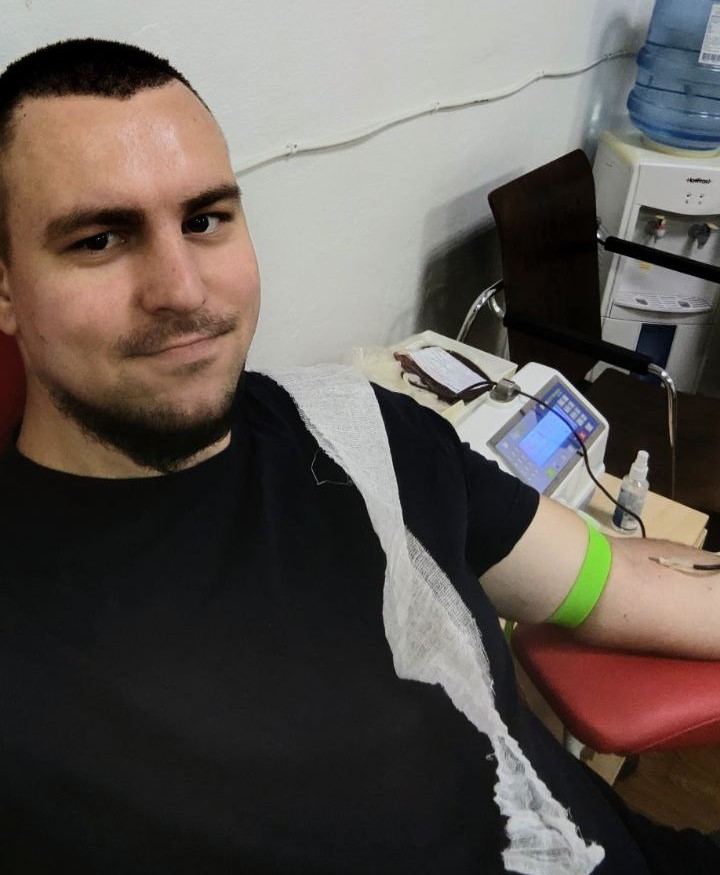 Anton Lomakin. Photo from a private archive
Anton Lomakin. Photo from a private archiveThe man says that it is quite difficult to prove the fact of captivity.
“There is a lot of paperwork, a lot of bureaucracy. I had no problems because I am a lawyer. If you are not a lawyer, it will be difficult for you“, says Lomakin.
He notes that although the website of the MinReintegration has a list of documents, this list is not exhaustive. And much more documents confirming the fact of captivity and torture will have to be collected.
“It may happen that you tell them how you were detained, give them some facts, and they will refuse you. There, they have a board meeting and vote on who is in favour of granting you status, who is against, and who abstained. In the morning, they come in such a cheerful mood, at first they all say yes, yes, yes, and then they get tired and just don’t give the number of votes, they can’t give any arguments“, adds the former prisoner.
He recalls that he had friends who applied to the commission under the MinReintegration and were denied the first time, but when they applied again with the same package of documents, their status was confirmed. Anton notes that these people even had a video showing the occupiers detaining them. There were witnesses who testified, but the victims were not granted status the first time.
The forensic expert looked at it and said: “There’s no point, you’ve already healed”
The former prisoner also complains about the quality of the forensic examination. He emphasises that former prisoners of the Russians after their release are not always able to immediately get to the de-occupied territory. Then time passes until a person applies to law enforcement, until the investigator refers the case, until all the extracts are received, until the queue…
“It happened to me once. A guy was sitting in the office, looked at the results and said: “There’s no point in this, because you’ve already healed here, and here, too, we can’t prove this, here you have some kind of acne…” And there were still scars, he measured the bigger scars with a ruler and that was the end of the examination. That is, the forensic examination took about seven minutes. My ribs were broken, and I was told that there was no point in writing this in the examination, because everything had healed. You can’t see anything there, what you can see is a callus, do you need it? We don’t need it either“, says Lomakin.
In his opinion, people are used to working in this way, and sometimes forensic experts simply expect to be paid to give the right verdict.
“I told him right away that this was for Ukraine, not for me. It would be a case against Russia. Then he only wrote that there was a possibility of electric shock torture… However, knowing what I had been through, the forensic expert did not even prescribe any psychological tests“, the ex-prisoner stressed.
Anton Lomakin adds that he is extremely dissatisfied with the forensic examination.
According to Lomakin, there is currently no systematic programme for the rehabilitation of civilian hostages in the country. There are also no separate resources where information on this issue can be found.
“The main difficulty is to open a case, to have everything documented and your case transferred to the Prosecutor General’s Office. And then the prosecutor’s office appoints a manager, the manager communicates with you, then rehabilitation can be provided, etc.“, he says.
There are also cases when civilian hostages are helped by NGOs, but this assistance is also not systematic. For example, this was the case with Lomakin himself, and volunteers partially helped him raise funds to restore his health. He adds that all former prisoners need some kind of rehabilitation.
“I am recovering my health at my own expense and with the help of volunteers. I did not undergo rehabilitation when I had the time and opportunity, then it was not available, when it appeared, I went to work and have neither time nor opportunity“, the man adds.
The documents to be recognised as a victim took two years to collect
The former police officer notes that he has not had any problems with payments from the state. However, he knows of cases where people wait six months or even longer because the budget does not have the funds.
“I received confirmation at the end of the year and received payments a month before the new year. Those who received confirmation of their status after the new year have not received payments to this day. They keep saying that there is a lack of funding and so on“, says Lomakin.
Another former prisoner of the Kherson temporary detention facility, Volodymyr Ivanchenko, spent about two years collecting documents to prove that he was indeed held captive by the Russians. He was captured on June 26, 2022, in Kherson, and 43 days later, on August 8, he was released.
The man says that the occupiers did not like the fact that he was a member of the municipal guard and had an ID issued in 2019. In captivity, they simulated his execution several times, beat him severely with batons, and tortured him with electric shocks. And before releasing him, the occupiers severely beat Volodymyr and forced him to sign documents on cooperation.
After his release, he did not apply to the prosecutor’s office himself – he says he did not have time for that. After all, Volodymyr was delivering humanitarian aid with representatives of the local church.
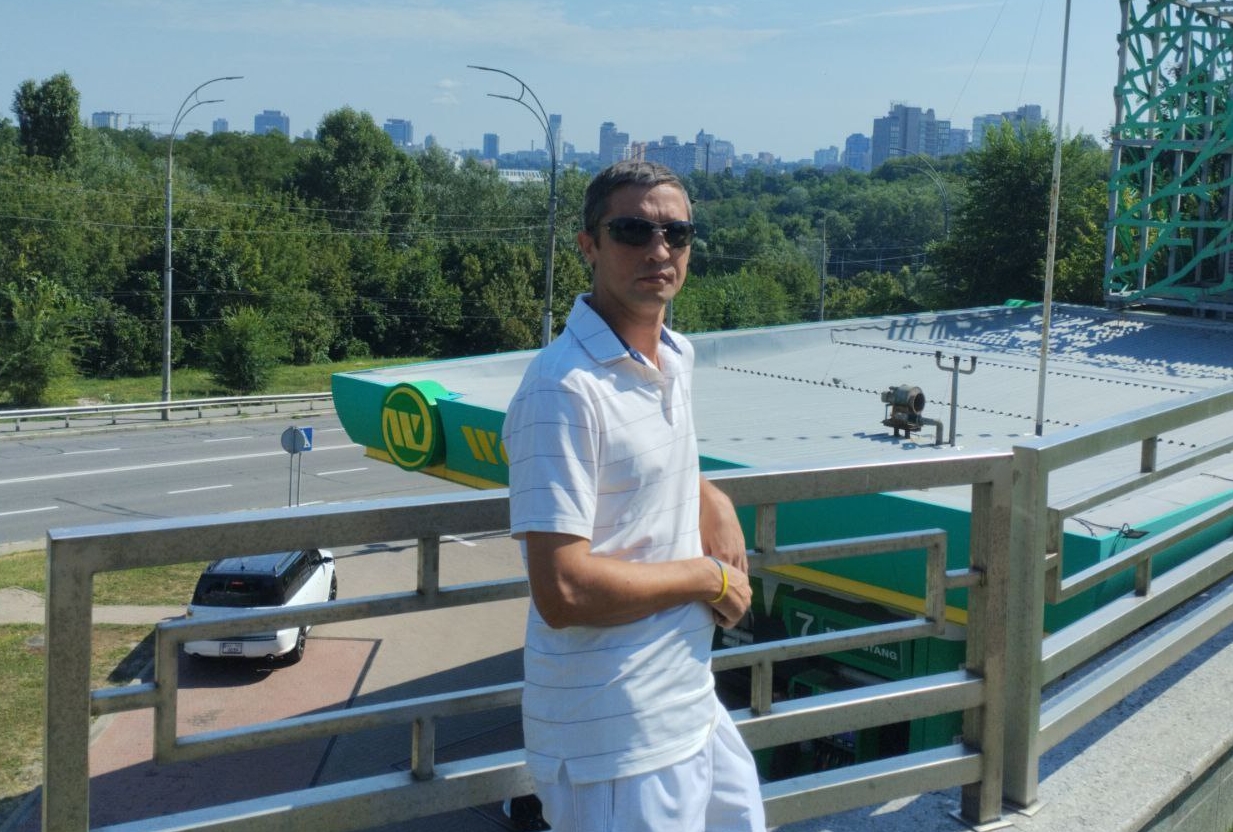 Volodymyr Ivanchenko. Photo from the man’s private archive
Volodymyr Ivanchenko. Photo from the man’s private archiveOne day, at the train station, he was approached by police officers, and he learned that Ukrainian law enforcement officers had been trying to find him for some time, as he was listed as a victim in a case of illegal detention and torture of another civilian.
“Then they took testimony, and I recognised one Russian military from a photo. They showed me other photos, but I didn’t recognise them. After I was released on August 8, 2022, somewhere in late March – early April 2023, I began to cooperate with our law enforcement officers, and finally the result is that I received all the documents proving that I am a victim. Two years have passed since my captivity“, the man said.
He says that after his release, he was able to take X-rays while still in occupation. Volodymyr came with complaints to the doctor, who sent him for an X-ray, and it turned out that his ribs and spine were broken.
“Then I had a military medical commission, another X-ray, and there was a fracture, I didn’t even know it was there. Before I went to prison I weighed 90 kg, when I came out I weighed 46… I even have a photo. They smashed my face with rifle butts, it did not heal immediately, it festered in some places. They took away my medicines, we had Vishnevsky liniment – they took it away. My back was black. They didn’t let me out until it healed“, says Ivanchenko.
He adds that he was able to partially document the beatings: immediately after his release, his relatives took photos. But the forensic examination did not take these photos into account.
Volodymyr says he has already collected documents for the commission to establish the fact of captivity, but has not yet submitted them. So, it is difficult to predict whether he will be able to get help the first time and when he will be paid.
The SBU can help establish the fact of captivity
According to Olena Belyachkova, coordinator of the groups of families of POWs and missing persons at Media Initiative for Human Rights, the investigation can actually last a year or longer, as sometimes there is simply not enough staff to conduct the proceedings.
According to her, the SBU currently has a Joint Centre for the Coordination of the Search and Release of Prisoners of War and Illegally Deprived of Liberty as a Result of Aggression against Ukraine. It is responsible for establishing the facts of captivity of not only military but also civilians. This body establishes the fact of captivity and issues a relevant confirmation.
“Both military and civilians, if they are taken prisoner, must be registered with the National Information Bureau, which was established in accordance with the Geneva Conventions. And after the victim is released from captivity, they can apply to this bureau to apply to the relevant SBU bodies for this confirmation”, the expert says.
Therefore, civilian hostages can apply to the SBU after their release. When civilians are released from captivity, the SBU collects testimonies, checks these circumstances, and accordingly, this agency can also confirm that a person was indeed a civilian hostage and that they have testimonies and facts to prove it. That is, the agency’s employees can also issue a certificate No. 55 (stating that the civilian was indeed held captive by the occupiers – Ed.), which gives the right to apply to the commission under the MinReintegration and receive the status of a civilian hostage.
“This status provides financial guarantees, including a one-time release allowance of 100,000 hryvnias. Additionally, if the family did not apply while the civilian was in captivity, and there are applications with supporting documents, the individual may receive another 100,000 hryvnias for each year of captivity. This is currently one of the guarantees provided to released civilian hostages“, Belyachkova said.
She confirms that it is more difficult for civilians to prove the fact of captivity than, for example, for the military. Therefore, it is important to have witnesses, these can be people who were with the victim in places of detention, relatives who witnessed the victim being taken away or abducted, local authorities who have the right to issue a confirmation that the civilian was indeed abducted and they, as local authorities, were aware of this.
It is easier to confirm the facts of torture for the military than for civilians
The MIHR expert says that it is also easier for the military to confirm the facts of torture and ill-treatment than for civilians. After all, these can be not only physical traces, but also mental and psychological consequences. Therefore, in order to establish and confirm that a person has suffered certain injuries because of being in captivity, the military, for example, are sent to a hospital, they have extracts, epicrisis reports, and so on.
“But again, this is not enough, it is a medical opinion, it does not establish a causal link, and doctors will not do this, because this is the task of an expert. They refer to forensic medical examination after the treatment and rehabilitation process is completed, and attach these medical documents to the examination that is being conducted. That is, it is a comprehensive examination, not only a medical examination to identify traces and consequences of torture, but also a psychological one“, Belyachkova adds.
According to her, the expert’s opinion in this area will also confirm that ill-treatment and torture were used against the person. And this already indicates that Russia has violated international humanitarian law. Therefore, according to Belyachkova, it is not very good if it is not possible to confirm captivity through a forensic medical examination, although in this case there is still a psychological examination. Here, a specialist can confirm that after captivity, a person’s behaviour has changed, their sleep has deteriorated, and their anxiety has increased.
Also, according to the expert, victims can provide testimonies collected by documenters from human rights organizations as evidence of torture, if the documentation was conducted in accordance with the Istanbul Protocol.
(Note: Guidelines for the Effective Investigation and Documentation of Torture and Other Cruel, Inhuman or Degrading Treatment or Punishment,Treatment or Punishment. The Istanbul Protocol is the first set of international guidelines for documenting torture and its consequences. The Istanbul Protocol sets out a set of guidelines for assessing allegations of torture and ill-treatment, for investigating cases of torture, and for reporting documented cases of torture to the judiciary or other authorities.)
“The Istanbul Protocol provides for a number of issues, including torture. It is clear that a human rights defender is not a doctor or a specialist in a narrow field, like, for example, a forensic expert. But this is still documentation, so the Istanbul Protocol can also be used, i.e., interviews can be conducted according to it“, the expert says.
At the same time, Belyachkova clarifies that this process is more complicated for civilians, especially if they return not as part of an official exchange, but when they are released in the occupied territory, for example, under a pardon application, and people manage to somehow move to the government-controlled territory. In this case, the civilian is left face to face with these problems and a lack of understanding of what to do. If such people do seek help, they can be sent for treatment together with the military, but this requires state support and control, Belyachkova said.
Civilians are rehabilitated and treated for the consequences of torture at their own expense or through charitable donations
The MIHR expert also notes that it is much more difficult for civilians who have returned from Russian captivity to undergo rehabilitation at the expense of the state than, for example, for the military. According to her, there is a regulatory framework that governs the procedure for rehabilitation and treatment, but she cannot give any examples of how it is implemented.
“I can’t say that the state has treated anyone there, or helped to put implants or treat teeth, because for the military it is more guaranteed and protected, there are relevant programmes. But I have never seen this applied to civilians“, says Belyachkova.
She adds that she knows about cases where Ukrainian medical facilities have treated wounded civilians after captivity for free. But she admits that civilians are less protected than military personnel.
“Unfortunately, our legislation does not take into account the fact that civilians are held in the same conditions as military personnel in captivity, they are subjected to torture and ill-treatment. And they are released in the same terrible condition as military personnel. On the regulatory side, from what I know, treatment is mainly at their own expense, or with the help of NGOs or foundations“, the expert says.
She adds that the family of a civilian hostage receives essentially nothing but 100,000 hryvnias a year. For example, when a civilian is abducted, the employer does not fire the person, meaning that the job is saved, but the employer does not pay anything to the family, as it is not legally obliged to do so and the losses incurred are borne by the aggressor state.
According to Belyachkova, not everyone who submits an application receives compensation immediately. She emphasises that the issue of payments should be clarified individually with those involved in the commission, by calling the listed consultation phone numbers. The expert adds that the commission is currently receiving a large number of applications, up to 1,000 or more can be considered at a time. After all, families of prisoners of war, families of civilian hostages released officially and unofficially apply to the commission.
“There is also a category of those who were in the colonies before the full-scale invasion and did not apply for assistance for each year of their stay. And so several categories of applications for consideration and, accordingly, making positive decisions on, let’s say, 90% of these applications, implies that these 100,000 hryvnias should be paid for each person“, adds the MIHR expert.
She explains that a lot depends on budgeting and funding – specifically, how much has been allocated by the state and when it will be provided to gradually implement positive decisions. Currently, there is a problem with the timeframe, which is about 3-4 months. However, Belyachkova emphasises that it is important to understand that if there is a positive decision, all that remains is to wait for the funding, and in any case, the affected civilians will receive the money.


